Mera Peak, the highest trekking peak in Nepal, offers an unparalleled adventure for experienced mountaineers and passionate trekkers alike. Standing at an impressive 6,476 meters, this expedition through the Everest region promises breathtaking Himalayan vistas and a challenging ascent that will test the limits of even the most seasoned climbers. With a well-planned 16-day itinerary, carefully selected accommodations, and the guidance of experienced professionals, this journey into the heart of the Himalayas is an opportunity to push one’s boundaries and create memories that will last a lifetime. Discover the allure of Mera Peak and uncover the secrets it holds for those willing to take on the challenge.
Key Points
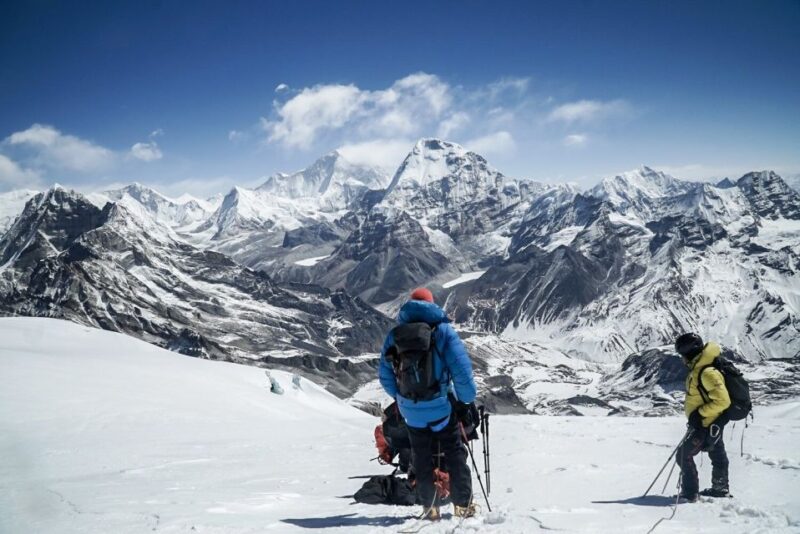
- Mera Peak, at 6,476 meters, is the highest trekking peak in Nepal, offering breathtaking Himalayan vistas.
- The 16-day trekking itinerary includes acclimatization, a summit push, and scenic Sherpa villages in the Khumbu region.
- Accommodations range from deluxe hotels in Kathmandu to cozy local lodges and tented camps closer to the mountain.
- Guided expeditions provide essential climbing equipment, first-aid support, and expertise to ensure a safe and successful climb.
- Permits and paperwork, including the Mera Peak Climbing Permit and Sagarmatha National Park Permit, are required for the expedition.
Mera Peak Overview
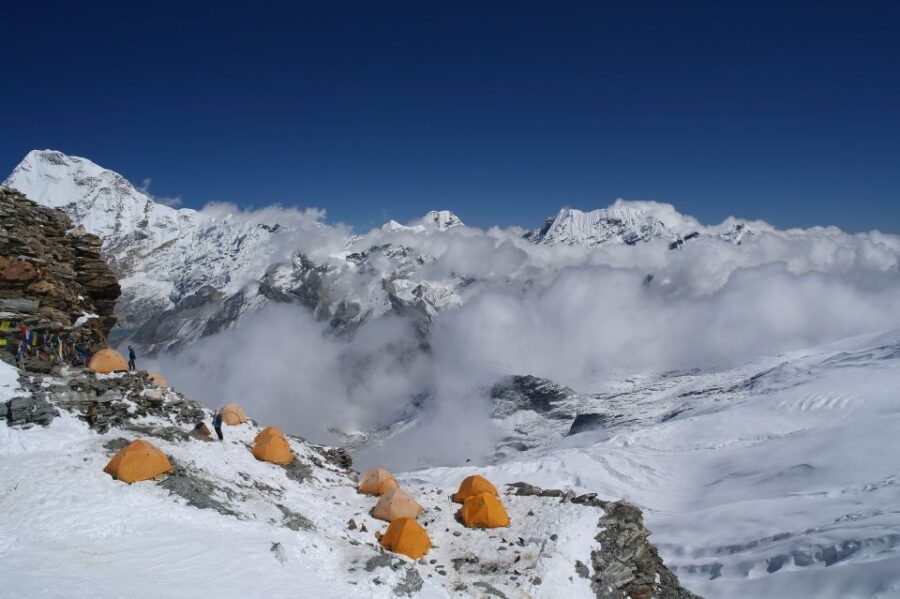
Mera Peak, at an impressive elevation of 6,476 meters (21,247 feet), is a renowned destination for mountaineering enthusiasts seeking an extraordinary Himalayan challenge.
As the highest trekking peak in Nepal, Mera Peak offers a thrilling and rewarding climb, showcasing breathtaking panoramas of the majestic Himalayan landscape.
Situated in the heart of the Khumbu region, the trek to Mera Peak takes adventurers through scenic Sherpa villages, lush alpine meadows, and glacial moraine.
Along the way, climbers can enjoy the rich cultural heritage of the region and forge bonds with like-minded explorers.
With its technical yet accessible nature, Mera Peak presents an opportunity for both seasoned mountaineers and ambitious trekkers to push their limits and achieve a remarkable summit.
You can also read our reviews of more tours and experiences in Lukla.
Trekking Itinerary

The 16-day trekking itinerary takes adventurers on a captivating journey through the heart of the Khumbu region, offering unparalleled vistas of the Himalayan landscape.
Highlights include:
-
Soaring over the magnificent Lukla airstrip before trekking to Chutanga, the gateway to the Mera Peak.
-
Ascending through the stunning Thuli Kharka and Kothe, where you’ll catch glimpses of the mighty Mera glacier.
-
Reaching Thangnag, the last village before the climb, and acclimatizing at Khare in preparation for the summit push.
-
The thrilling summit day, where you’ll conquer Mera Peak’s 6,476-meter peak and enjoy breathtaking panoramic views of the Himalayas.
Accommodations and Meals
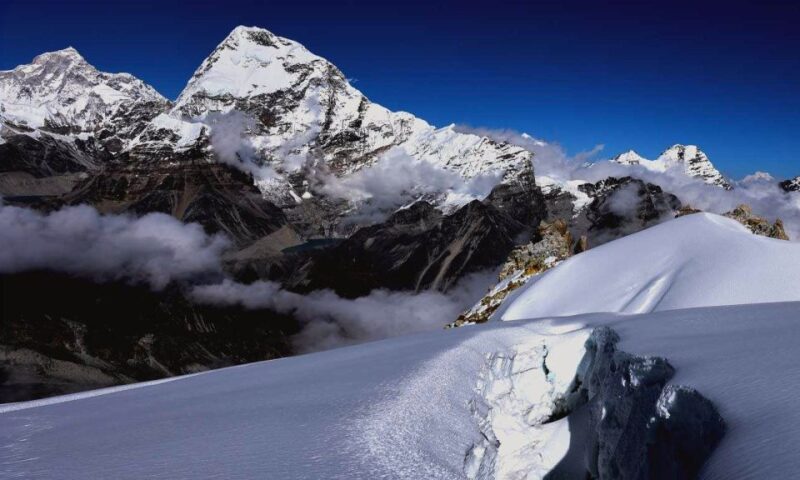
After the exhilarating trek through the Khumbu region, climbers can look forward to comfortable accommodations and nourishing meals during the Mera Peak Climbing expedition.
Lodging ranges from deluxe hotels in Kathmandu to cozy local lodges and tented camps throughout the trek, ensuring a balance of comfort and proximity to the stunning mountain landscapes.
Meals are provided on a full board basis, featuring wholesome local cuisine to fuel the climbers’ energy needs.
The tour company takes great care in selecting the best available accommodations and providing high-quality meals, allowing participants to fully enjoy the Himalayan adventure without worrying about their basic needs.
Climbing Equipment
Climbers receive a comprehensive set of group climbing equipment to ensure their safety and success on the Mera Peak expedition. This includes:
-
Sturdy climbing ropes to facilitate the ascent and descent of the mountain.
-
Ice screws and anchors to provide secure footing on the icy terrain.
-
Harnesses, carabiners, and other essential climbing gear for safe and comfortable trekking.
-
Trekking poles to ease the strain on the legs and improve stability during the long hikes.
The tour operator provides this equipment, allowing climbers to focus on the challenging yet rewarding journey ahead.
With the proper gear and guidance from experienced guides, Mera Peak’s summit becomes a tangible goal for adventurous trekkers.
More Great Thing To Do NearbyGuide and Support Staff
Experienced, English-speaking guides lead the Mera Peak climbing expeditions, ensuring climbers’ safety and success throughout the journey. They’re highly skilled professionals who’ve extensive knowledge of the mountain terrain and local conditions.
The guides are supported by a team of porters who carry the expedition’s gear, ensuring climbers can focus on the climb. Together, the guides and porters work seamlessly to provide a safe and enjoyable experience for all participants.
They’ll offer guidance on proper pacing, navigation, and technical climbing techniques, as well as provide first-aid and emergency support if needed. With their expertise and support, climbers can fully enjoy the breathtaking Himalayan adventure.
Permits and Paperwork
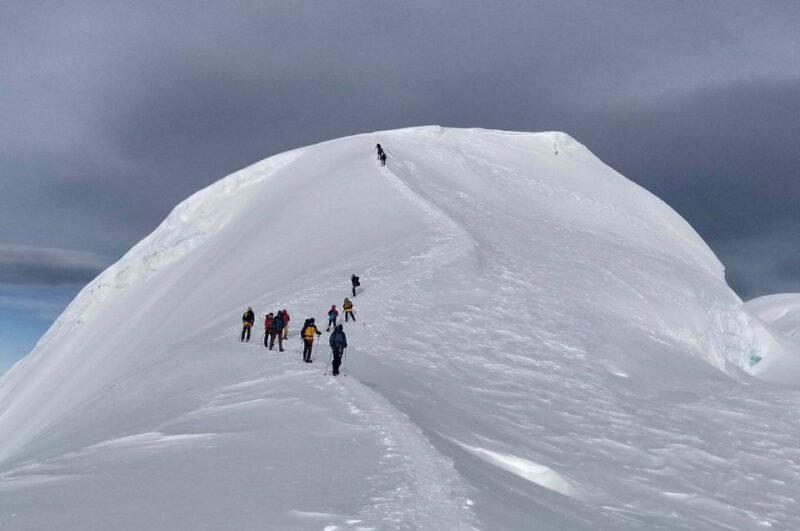
Proper permits and paperwork are essential for a successful Mera Peak climbing expedition. Climbers must obtain a Mera Peak climbing permit and national park permits prior to the trek, which can be arranged through the tour operator. These permits ensure compliance with local regulations and support sustainable tourism practices in the region.
The key permits and paperwork include:
-
Mera Peak Climbing Permit: This permit is required to access the Mera Peak climbing route and is issued by the Nepalese government.
-
Sagarmatha National Park Permit: Climbers must obtain a permit to enter the Sagarmatha National Park, which encompasses the Mera Peak region.
-
Trekking Information Management System (TIMS) Card: This card is required for all trekkers in the region and provides emergency support.
-
Personal Travel Documents: Climbers must have a valid passport and Nepal entry visa to participate in the expedition.
Pricing and Cancellation
The Mera Peak climbing expedition is priced from SEK 20,842 per person, and travelers can take advantage of a free cancellation policy up to 24 hours in advance for a full refund. To book the trip, adventurers can reserve their spot now and pay later. Prices include airport transfers, accommodation, meals, group climbing equipment, and more, but exclude international airfare, personal expenses, and tips. The following table outlines key booking information:
| Booking Details | Information |
|---|---|
| Price | From SEK 20,842 per person |
| Cancellation | Free up to 24 hours in advance |
| Payment | Reserve now, pay later |
| Inclusions | Transfers, accommodation, meals, equipment |
| Exclusions | Airfare, personal expenses, tips |
Booking and Availability
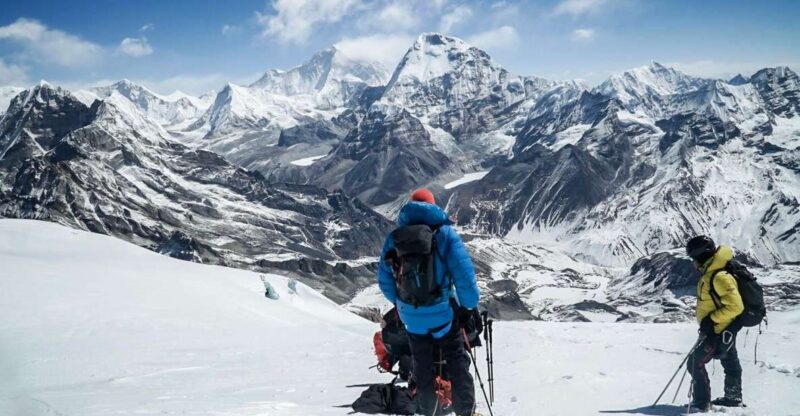
To book the Mera Peak climbing expedition, travelers can reserve their spot now and pay later. The adventure operator offers flexible booking options, allowing participants to secure their place on the trip and finalize payment at a later date.
With free cancellation available up to 24 hours in advance, adventurers can plan their journey with confidence, knowing they can receive a full refund if plans change.
The booking process is straightforward:
-
Check availability for the desired start date and number of participants.
-
Select the preferred package and reserve your spot.
-
Take advantage of the pay later option to finalize the payment.
-
Enjoy the peace of mind of free cancellation in case of any unforeseen changes.
Frequently Asked Questions
What Is the Best Time of Year to Climb Mera Peak?
The best time to climb Mera Peak is typically from April to May and October to November. These months offer the most favorable weather conditions, with clear skies, moderate temperatures, and stable snow and ice on the mountain.
How Difficult Is the Mera Peak Climbing Route?
The Mera Peak climbing route is considered a moderately difficult technical ascent suitable for experienced trekkers and climbers. It requires the use of ropes, ice axes, and crampons, and involves traversing glaciers and steep snow slopes.
Can I Rent Equipment Locally or Do I Need to Bring My Own?
Climbers can rent essential equipment like ice axes, crampons, and harnesses locally in Nepal. However, it’s recommended to bring personal climbing gear such as backpacks, sleeping bags, and technical clothing for the best fit and comfort on the mountain.
Is There a Minimum Group Size Requirement for Booking?
There’s typically no minimum group size requirement for booking this Mera Peak climbing expedition. Clients can join as solo travelers or in small groups, and the tour operator will assist in arranging a suitable itinerary and group dynamics.
Can I Extend My Stay in Nepal After the Mera Peak Climb?
Yes, you can extend your stay in Nepal after the Mera Peak climb. The tour operator offers flexible options to extend your trip and explore more of Nepal’s diverse landscapes and cultural attractions at an additional cost.
Recap
Mera Peak in the Everest region offers an exhilarating challenge for climbers of all skill levels.
The 16-day expedition provides breathtaking Himalayan vistas, comfortable accommodations, and expert guidance to ensure a safe and memorable experience.
Whether you’re a seasoned mountaineer or an enthusiastic trekker, Mera Peak‘s majestic summit promises an unforgettable adventure in the heart of Nepal’s Everest region.
You can check if your dates are available here:More Tour Reviews in Lukla
Not for you? Here's more things to do in Lukla we have recnetly reviewed
- 11 Best Helicopter Flights And Tours In Lukla
- 3 Best Private Car With Driver Services In Lukla
- 9 Best Tours In Lukla
- 7 Best Hiking And Trekking Tours In Lukla
- Everest Base Camp With Cho La & Renjo La Pass Trek – 19 Days
- Kathmandu: Everest Base Camp Helicopter Tour With Breakfast
- Everest Scenic Mountain Flight With Guaranteed Window Seat
- Everest Base Camp Trek
- Kathmandu: Mt. Everest Scenic Flight by Airplane
- Everest Base Camp Classic Trek
- Mera Peak Climbing
- Lukla to Kathmandu Flight Tickets for Everest Trekkers
